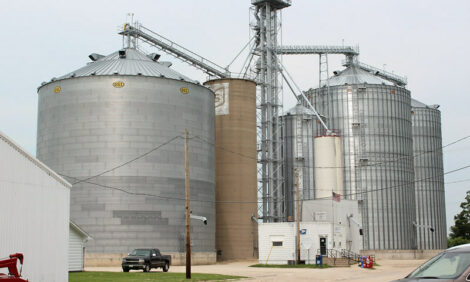



CME: US Pig Producers' Prospects Improve
US - CME's Daily Livestock Report for 31 December 2008.Tuesday’s USDA Hogs and Pigs Report, combined with the latest information that we have from Statistics Canada, indicates that the combined US-Canadian sow herds are the smallest they have been since March-April 1986. Note that, in the graph below, US and Combined inventories are read off the left-hand axis while Canadian numbers are read off the right-hand axis. Canada’s 1 January inventory estimate will not be available until mid-February. It is expected that it will indicate a year-on-year decline close to that of October’s 8.2 per cent. Should that happen, Canada’s breeding herd will drop below 1.4 million head since October 2000 and the combined herd will drop further, quite likely to the lowest level in our data set which goes back to 1975.

The question at this juncture is whether the herds will continue
to decline in 2009. Canada’s situation has improved markedly (albeit
from a disastrously low point) due to lower feed prices and a roughly 20 per cent
decline in the value of the Canadian dollar. That latter shift increases
100 per cent of Canadian producers’ income since Canadian pig and hog prices
are basically US prices converted to Canadian dollars. The gain is partially
offset by a relative increase in the 50 to 60 per cent of Canadian
costs that are tied to the US dollar. Uncertainty over the price impacts
of mandatory country-of-origin labeling is the major confounding factor in
this picture at present.
US producers’ prospects have improved as well but the recent
rise in both soybean meal and corn futures prices have dimmed those
significantly. In mid-November, corn, soybean and lean hogs futures
prices were offering average profits of over $13 per head in 2009. Those
“lock-in“ profits are not presently available but the possibility of avoiding
losses this year and the cutbacks occurring in the broiler and beef industry
will all encourage US producers to at least hold breeding herd numbers
constant in anticipation of better times in 2010.
Hog price forecasts coming out of Tuesday’s report pointed to up
and down year and with most analysts expecting prices that provide small
losses in the first quarter, profits in the second and third quarters and
losses once again in the fourth quarter. That is not a scenario for producers
to accomplish much financial healing, especially considering the level
of 2008 losses. Iowa State University estimates that farrow-to-finish operations
lost, on average, just over $21/head last year, a level second
only to 1998’s average of $27/head.
Profits in 2009, of course, depend heavily on what happens in
the corn and soybean markets, both of which saw healthy gains in yearend
trading on Wednesday. It appears to us that soybeans will be the
driver and that corn will have to match projected profitability in order to
get acres this spring. Lower cash fertilizer and fuel prices will help corn
compete effectively for the acres that are still considered variable.








